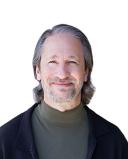Mindfulness
Thich Nhat Hanh, Purveyor of Peace Within and Without
How mindfulness came to the West is not about what but who.
Posted February 21, 2022 Reviewed by Ekua Hagan
Key points
- Thich Nhat Hanh is considered to be the father of contemporary mindfulness, credited with bringing it to the Western world.
- He applied Buddhist insights to every aspect of society, including education, medicine, business, technology, and the environmental crisis.
- In 1967, Dr. Martin Luther King, Jr., nominated Thich Nhat Hanh for the Nobel Peace Prize, calling him an “apostle of peace and nonviolence.”
"Our own life has to be our message."—Thich Nhat Hanh
In late January, when news of the passing of Thich Nhat Hanh at the age of 95 spread throughout the world, an incredible breadth of people spoke about how he and his work had affected them—whether through a talk, a book, a video, a retreat, or an example. It was a compelling indicator of the impact his teachings on Buddhism and mindfulness have had in the Western world as a set of ideas that extended far beyond the limits of formal Buddhist affiliation or practice.
The best-known Buddhist in the Western world
Aside from the Dalai Lama, Thay, as he was known to his followers, was perhaps the best-known Buddhist in the Western world. Ordained as a Buddhist monk at age 16 in his native Vietnam, Thich Nhat Hanh was a prominent teacher and social activist in his home country prior to being exiled for 39 years (ending in 2005) for his opposition to the Vietnam War.
He first came to the US in 1961 to study at Princeton and teach Buddhism and comparative religion at Columbia. After returning in 1966, he connected with Dr. Martin Luther King Jr. around their shared anti-war activism. In 1967, Dr. King nominated Thich Nhat Hanh for the Nobel Peace Prize, calling him an “apostle of peace and nonviolence.” This activism during the Vietnam War represented the birth of what came to be known as "applied Buddhism," in which those who practice mindfulness utilize it in part to advocate for others in the real world. He applied Buddhist insights to every aspect of society, including education, business, technology, and the environmental crisis.
Thay is generally considered to be the father of and most prominent teacher of contemporary mindfulness—an approach to living as well as a set of practices centered on being fully present, conscious, and intentional in the current moment. He believed mindfulness was a key, not just to happiness, but to being authentically alive, and he taught that you don’t have to spend years on a mountaintop to benefit from Buddhist wisdom. Instead, he taught that becoming aware of your breath, and through that coming into present-moment awareness, creates the potential for everyday activities to take on a joyful, even miraculous quality.
He founded monasteries and meditation centers on four continents, beginning with the Plum Village monastery in southwest France, now the West’s largest and most active Buddhist monastery, with over 200 resident monastics and over 10,000 visitors every year, who come from around the world to learn “the art of mindful living.” His teachings have impacted politicians, business leaders, activists, teachers, and countless others.
In November 2014, a month after his 88th birthday and following several months of rapidly declining health, Thich Nhat Hanh suffered a severe stroke. Although he was left unable to speak and mostly paralyzed on his right side, he continued to offer the Dharma and inspiration through his peaceful, serene, courageous, and unflinching presence. In November 2018, Thay returned to his native Vietnam where he lived until his transition.
Publications and teachings
As a writer he was astonishingly prolific, publishing more than 130 books (100 in English) and selling more than 3 million copies in the United States alone, many translated into multiple languages. Thay was able to communicate the essentials of Buddhist wisdom and psychology in ways that made it accessible to people all over the world. His teachings have been instrumental in constructing a bridge between modern psychological and psychotherapeutic approaches to helping people get through and heal from their various challenges and these ancient wisdom practices.
A testament to the therapeutic value of mindfulness is that more and more behavioral health and medical professionals incorporate mindfulness practices into their approaches to helping people. Specifically, the classic The Miracle of Mindfulness (1975) is credited with helping to "lay the foundations" for the use of mindfulness in treating depression through "mindfulness-based cognitive therapy," and influencing the work of Marsha Linehan, the originator of Dialectical behavior therapy (DBT). Jon Kabat-Zinn, developer of Mindfulness-Based Stress Reduction, a program available at many hospitals and medical centers around the world, was among Thay’s students.[1] As of 2015, approximately 80% of medical schools are reported to have offered mindfulness training.[2] Moreover, Acceptance and Commitment Therapy (ACT) draws on mindfulness practices and mindfulness-based protocols have been developed for relapse prevention of addictive behaviors.
Pete Kuhn is a dear friend of mine who was ordained by Thich Nhat Hanh and spent many weeks studying with him directly at his monasteries and on retreat around the world. As he put it, “Thay’s belief that Buddhism should be brought out of the monastery and into the community (starting with rebuilding communities that had been bombed during the war) was revolutionary.” This defined engaged Buddhism: That our knowledge/teachings should translate to and inform our everyday activities and improve the way we live, that mindfulness is not just a state but an action.
“Thay’s approach was that everything was a form of meditation and an opportunity to practice mindfulness.” He conceived of walking as a meditation unto itself in which “each footstep is the destination rather than a just a means to the end of wherever we’re going. We were walking up mountains together in India and his gait never changed. To be with Thay was to witness how he walked in a way that was natural and fluid, and as he would say, ‘With each step, we are putting our signature on the Earth.’”
Pete described a sage who genuinely practiced what he preached (so to say), “Thay was incredibly consistent in the way he was—the way he walked, talked and laughed. He was a very playful, fun-loving person, careful to balance business with downtime—drinking tea and ‘hammock time.’ He taught that we can balance doing with being in order to be heartfully present with whatever the activity is.”
Indeed, Thich Nhat Hanh’s most important psycho-spiritual message may be that being peaceful does not mean there is an absence of anxiety, sadness, fear, intolerance, loneliness, shame, anger, etc. It’s about shifting perspective and developing the skills through which we can find peace in the presence of those forms of suffering, and in the process transform that suffering.
Copyright 2022 Dan Mager, MSW
References
Fitzpatrick, Aidyn (January 24, 2019). "The Father of Mindfulness Awaits the End of This Life". Time. Archived from the original on December 9, 2021. Accessed January 28, 2022.
Buchholz, Laura (October 2015). "Exploring the Promise of Mindfulness as Medicine". JAMA. 314 (13): 1327–1329. doi:10.1001/jama.2015.7023. PMID 26441167.




